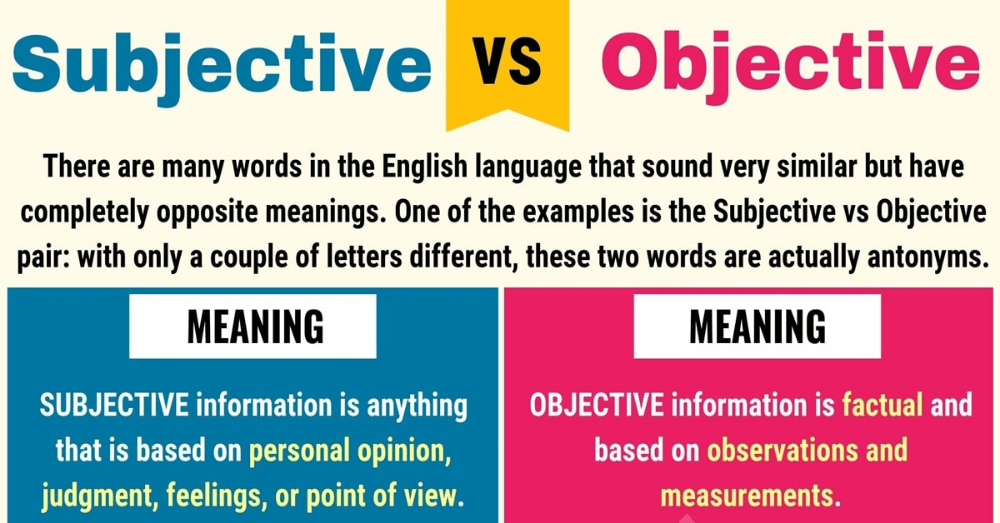
This trade-off is visually captured by the concave shape of the PPC, showcasing the law of increasing opportunity cost. It applies when a company with limited resources makes choices to allocate money, workers, time, and strategic thinking to one initiative. That initiative can thrive, but it will do so at the increasing expense of other opportunities. The law of increasing opportunity costs states that as you increase production of one good, the opportunity cost to produce an additional good will increase.
FACT SHEET: Biden-Harris Administration Announces National … – The White House
FACT SHEET: Biden-Harris Administration Announces National ….
Posted: Mon, 31 Jul 2023 07:00:00 GMT [source]
This means that real variables such as the production costs of producing goods, the market value of specific consumer goods, and the United States’ international trade in capital goods and trade gains. Every time you move from one point on the line to another, there is opportunity cost, which is what you have to give up to get something else. The opportunity cost of moving from one efficient combination of production to another efficient combination of production is how much of one good is given up to get more of the other. Every business tries to use its resources as efficiently as possible, that is, effectively.
Graphical Representation through the Production Possibility Curve (PPC)
It had enjoyed seven years of dramatic growth and unprecedented prosperity. Its resources were fully employed; it was operating quite close to its production possibilities curve. Opportunity costs are sometimes confused with trade-offs, but these two terms have different meanings in economics. A trade-off is what you have to expend in order to pursue an option, while an opportunity cost is what you miss out on by not pursuing a better option. When people talk about “cost,” they tend to think in terms of accounting cost – the dollars spent on something. If your business chooses to spend $1,000 on a computer, for example, then the accounting cost is $1,000.

We have already seen that an additional snowboard requires giving up two pairs of skis in Plant 1. The plant with the lowest opportunity cost of producing snowboards is Plant 3; its slope of −0.5 means that Ms. Ryder must give up half a pair of skis in that plant to produce an additional snowboard. Figure 2.5 “Production Possibilities for the Economy” illustrates a much smoother production possibilities curve. This production possibilities curve in Panel (a) includes 10 linear segments and is almost a smooth curve.
Recommended Reading- The Law of Increasing Opportunity Cost
The PPF is a graph showing all combinations of two goods that can be produced given the available resources. In this lesson, let’s assume we can produce either baseballs or puzzles. The following PPF shows the combination of baseballs and puzzles we can make given our resources. USDA touches the lives of all Americans each day in so many positive ways. Between 1929 and 1942, the economy produced 25% fewer goods and services than it would have if its resources had been fully employed.
Here, the opportunity cost is lowest at Plant 3 and greatest at Plant 1. The table in Figure 2.2 “A Production Possibilities Curve” gives three combinations of skis and snowboards that Plant 1 can produce each month. The curve is a downward-sloping straight line, indicating that there is a linear, negative relationship between the production of the two goods. An economy’s factors of production are scarce; they cannot produce an unlimited quantity of goods and services.
We will explore examples, offer practical insights, and discuss strategic considerations that can empower individuals and economies to make sound choices in pursuit of their desired outcomes. Bear in mind the law of increasing opportunity cost when taking stock of the resources that you have at your disposal. If we continue pouring more and more of a limited resource into an activity, our opportunity cost grows for each additional unit of that resource.
Why do business owners need to know about opportunity costs?
We can minimize waste, optimize production possibilities, and drive success. Unlock your production potential and shape a prosperous future for your organization through optimized resource allocation decisions. It involves analyzing the potential benefits and drawbacks of allocating resources to different goods or services. By understanding the opportunity costs, decision-makers can identify the most efficient allocation strategies that optimize resource utilization and output. A comprehensive understanding of the law of increasing opportunity cost is paramount in decision-making.

When devoted solely to snowboards, it produces 100 snowboards per month. Opportunity cost refers to what you miss out on by going with one option over another comparable option. The concept is an important part of economic and financial planning, and making decisions with opportunity costs in mind helps ensure that funds, resources, and time are put to optimal use. Understanding the law of increasing opportunity costs first requires understanding the notion of a standalone opportunity cost. The further you pursue an initiative, the more opportunity costs increase.
What is the Law of Increasing Opportunity Cost?
The farmer reallocates some of the resources from wheat to corn production to address this. The resources diverted from wheat production could have generated additional wheat yield if they had been invested in that area instead. Thus, the opportunity cost of producing more corn is the foregone output of wheat. Initially, the farmer allocates a significant portion of the land and resources to growing wheat.
These points may not fall along a straight line, in which case this will be represented by a curved production possibility frontier for economic growth. One way to understand how the law of increasing opportunity cost works is to consider a farmer deciding how to allocate farmland to grow two crops. Instead of dividing the available land equally between the two, the farmer decides to plant 70% of the land to corn and keep the rest to soybeans. If all the factors of production that are available for use under current market conditions are being utilized, the economy has achieved full employment. An economy cannot operate on its production possibilities curve unless it has full employment. Increasing the availability of these goods would improve the standard of living.
- The farmer reallocates some of the resources from wheat to corn production to address this.
- If the firm were to produce 100 snowboards at Plant 3, ski production would fall by 50 pairs per month (recall that the opportunity cost per snowboard at Plant 3 is half a pair of skis).
- Maximizing efficiency and output through informed choices, balancing short-term gains with long-term consequences, and evaluating the opportunity cost all contribute to making informed resource allocation decisions.
- Moving along the PPC implies reallocating resources from one good to another.
- Department of Agriculture (USDA) resources to better serve every American.
A production possibilities curve is a graphical representation of the alternative combinations of goods and services an economy can produce. In drawing the production possibilities curve, we shall assume that the economy can produce only two goods and that the quantities of factors of production and the technology available to the economy are fixed. To picture the Law of Increasing Opportunity Cost in action, think of what happens if your business opens a new production line. When you increase production of an existing product, you need more resources, including labor, equipment, and raw materials. Each additional unit produced comes at the expense of another product you could be making with those same workers and financial resources.
If I tell one of my workers to clean the warehouse floor rather than answer the phone, I might lose some sales. Suppose a manufacturing firm is equipped to produce radios or calculators. It has two plants, Plant R and Plant S, at which it can produce these goods. Given the labor and the capital available at both plants, it can produce the combinations of the two goods at the two plants shown. Workers, for example, specialize in particular fields in which they have a comparative advantage. People work and use the income they earn to buy—perhaps import—goods and services from people who have a comparative advantage in doing other things.
For each additional worker you send back, you lose a larger amount of sales revenue as the remaining sales staff gets increasingly overwhelmed and customers leave in frustration. By considering their decisions’ long-term sustainability and implications, decision-makers can optimize production possibilities. Achieving this balance allows for both short-term gains and long-term viability, leading to more sustainable and successful outcomes in resource allocation. Therefore, decision-makers must meticulously analyze the implications of their choices along the curve and consider the opportunity costs involved.
The Law of Increasing Opportunity Cost says that when a person, business, or other entity continues on a particular course of action, the opportunity cost for that action will continually increase. With limited resources, each time a decision is made or resources allocated, the cost of not making an alternative choice increases. Opportunity cost and the law of increasing opportunity cost are illustrated by the production possibilities frontier (PPF) or production possibilities curve (never a straight line). The PPC form also gives us information about the technology of production (in other words, how resources are combined to produce these goods). The curved shape of the PPC in Figure 111 indicates rising opportunity costs of production. Because not all resources are equally useful for producing all things, we tend to encounter rising opportunity costs as we increase production of a particular good.
Law of increasing opportunity cost
Each of the plants, if devoted entirely to snowboards, could produce 100 snowboards. Plants 2 and 3, if devoted exclusively to ski production, can produce 100 and 50 pairs of skis per month, respectively. The exhibit gives the slopes of the production possibilities curves for each plant. The opportunity cost of an additional snowboard at each plant equals the absolute values of these slopes (that is, the number of pairs of skis that must be given up per snowboard). Figure 2.4 “Production Possibilities at Three Plants” shows production possibilities curves for each of the firm’s three plants. To construct a combined production possibilities curve for all three plants, we can begin by asking how many pairs of skis Alpine Sports could produce if it were producing only skis.
Economists say that an economy has a comparative advantage in producing a good or service if the opportunity cost of producing that good or service is lower for that economy than for any other. Plant 3 has a comparative advantage in snowboard production because it is the plant for which the opportunity cost of additional snowboards is lowest. To find this quantity, we add up the values at the vertical intercepts of each of the production possibilities curves in Figure 2.4 “Production Possibilities at Three Plants”. The greater the absolute value of the slope of the production possibilities curve, the greater the opportunity cost will be. The plant with the lowest opportunity cost of producing snowboards is Plant 3; its slope of −0.5 means that Ms. Ryder’s firm must give up half a pair of skis in that plant to produce an additional snowboard. In Plant 2, she must give up one pair of skis to gain one more snowboard.
- Plants 2 and 3, if devoted exclusively to ski production, can produce 100 and 50 pairs of skis per month, respectively.
- Instead of dividing the available land equally between the two, the farmer decides to plant 70% of the land to corn and keep the rest to soybeans.
- A comprehensive understanding of the law of increasing opportunity cost is paramount in decision-making.
- If we continue pouring more and more of a limited resource into an activity, our opportunity cost grows for each additional unit of that resource.
The law of increasing opportunity cost states that when a company continues raising production its opportunity cost increases. Specifically, if it raises production of one product, the opportunity cost of making the next unit rises. This occurs because the producer reallocates resources to make that product.






